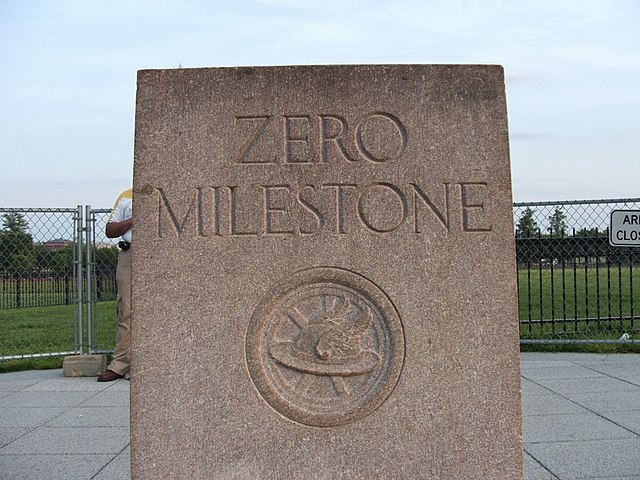Top Qs
Timeline
Chat
Perspective
Milford pink granite
From Wikipedia, the free encyclopedia
Remove ads
Milford pink granite, also known as Milford granite or Milford pink is a granite deposit located in and around the town of Milford, Massachusetts. Covering an area of approximately 39 square miles (100 km2) according to the USGS, the Proterozoic igneous rock is also sometimes referred to as Braggville granite for several quarries in the neighboring village of Braggville.[2]
From 1870 to 1940, the town of Milford became famous for the "pink" variety of this stone, prized as a building material. According to local legend, the granite was "discovered" in the early 1870s by two brothers, James and William Sherman at Rocky Woods in Milford.[3] At its peak, over 1,000 men labored in dozens of quarries in Milford and nearby Hopkinton. A sample of Milford Pink is on display at the Smithsonian Institution.[4]
Milford pink granite was quarried by the Fletcher Granite Company, at their Lumber Street quarry in Hopkinton,[5] which also owned a granite quarry in Milford, New Hampshire, 50 miles to the north.
Remove ads
Description

The granite is described as a light gray or light pinkish-gray to a medium, slightly pinkish or pinkish and greenish-gray biotite granite with spots from 0.2 to 0.5 inches (5.1 to 12.7 mm) across and in some cases tapering out to 1 inch (25 mm) in length.[1] The biotite is typically in clots or short streaks. It is commonly locally gneissic.[6] The color of the stone is governed mainly by its feldspars, pink from the potash and green from the soda lime feldspar.[1]
Remove ads
Examples of use

(1923)
- Massachusetts
- Bancroft Memorial Library, Hopedale (1898)
- Boston Public Library, McKim Building, Boston (1895)
- Flour and Grain Exchange Building, Boston (1892)
- Memorial Hall, Milford (1884)
- Town Hall, Hopedale (1886)[7]
- Worcester City Hall, Worcester (1898)[8]
- New York City
- American Museum of Natural History (1869)[9]
- Brooklyn Museum, Brooklyn (1895)[9]
- General Post Office Building (1912)
- Pennsylvania Station (1910)[10]
- University Club of New York (1899)[9]
- Washington, D.C.
- Eccles Federal Reserve Building (1937)[11]
- First Division Monument (1924)[11]
- Zero Milestone (1923)[12]
- Other
- Allegheny County Courthouse, Pittsburgh, Pennsylvania (1888)[13]
- Cullum Hall of The United States Military Academy at West Point, New York (1898)
- John J. Glessner House, Chicago, Illinois (1887)
- Pennsylvania Station, Baltimore, Maryland (1911)
- Singapore Changi Airport, Changi, Singapore (2002)
Remove ads
Gallery
- American Museum of Natural History, New York City (1869)
- Flour and Grain Exchange Building, Boston (1892)
- Boston Public Library (1889)
- General Post Office, New York City (1914)
- Allegheny County Courthouse, Pittsburgh, Pennsylvania (1888)
- Brooklyn Museum (1895)
- Federal Reserve Board Building, Washington, D.C. (1937)
- Worcester City Hall, Worcester, Massachusetts (1898)
- Memorial Hall, Milford, Massachusetts (1884)
- John J. Glessner House, Chicago, Illinois (1887)
- Boston Public Library under construction, 1889
See also
References
External links
Wikiwand - on
Seamless Wikipedia browsing. On steroids.
Remove ads











